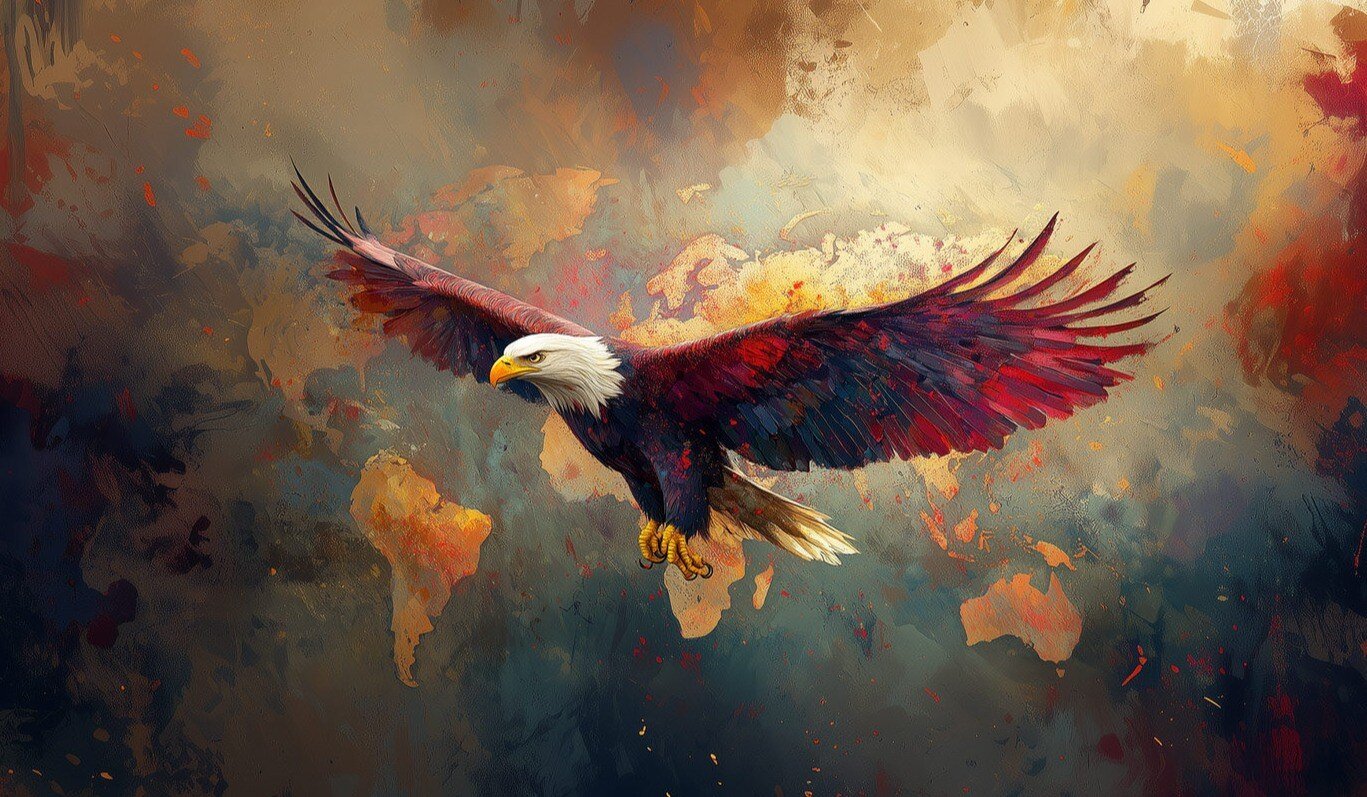
Mouse

Discovering The Mouse Spirit
In the hidden corners of the world, the mouse embodies the qualities of attention to detail, humility, and resourcefulness. With its tiny frame and keen senses, the mouse becomes a bearer of spiritual medicine, guiding us on a transformative journey of paying attention to the little things, finding strength in humility, and using our resources wisely.
The spiritual medicine of the mouse encourages us to be present in the moment, to observe the nuances of life, and to find beauty and significance in the little things. By embodying the mouse's spirit of attention to detail, we can cultivate a deeper appreciation for life's subtleties, gain a better understanding of our experiences, and navigate our journey with heightened awareness.
Beyond attention to detail, the mouse epitomizes humility. In its unassuming and unpretentious nature, the mouse serves as a model of humility and simplicity. Moreover, the mouse represents resourcefulness. The spiritual medicine of the mouse encourages us to be resourceful, to find creative solutions to challenges, and to utilize our talents and gifts to their fullest potential.
In addition to attention to detail, humility, and resourcefulness, the mouse's medicine involves guiding us to tread lightly in the world. In its delicate steps and unobtrusive presence, the mouse serves as a reminder of the importance of being mindful of our impact on the environment and the lives of others. The spiritual energy of the mouse inspires us to live in harmony with nature, to leave a positive imprint on the world, and to practice responsible stewardship of our resources.
Prefer to listen to this article?
Check out our podcast!
Newsletter
Keep reading ↓
- Spirit Animals ↓
- See All
- Alligator
- Anaconda
- Ant
- Arabian Oryx
- Beaver
- Bee
- Beetle
- Black Bear
- Buffalo
- Butterfly
- Camel
- Cat
- Cheetah
- Chimpanzee
- Condor
- Coyote
- Crab
- Dog
- Dolphin
- Dove
- Dragonfly
- Elephant
- Elk
- Emu
- Falcon
- Flamingo
- Fox
- Frog
- Gazelle
- Giraffe
- Goose
- Gorilla
- Grasshopper
- Hawk
- Hedgehog
- Hippopotamus
- Horse
- Hummingbird
- Hyena
- Jaguar
- Kangaroo
- Kiwi
- Koala
- Koi Fish
- Komodo Dragon
- Kookaburra
- Ladybug
- Lamb
- Lemur
- Lion
- Lizard
- Llama
- Manatee
- Mandarin Duck
- Meerkat
- Monkey
- Moose
- Mountain Goat
- Mouse
- Nightingale
- Octopus
- Orca Whale
- Otter
- Owl
- Ox
- Panda
- Panther
- Parrot
- Peacock
- Polar Bear
- Quetzal
- Rabbit
- Raccoon
- Raven
- Rhinoceros
- Rooster
- Salmon
- Sea Turtle
- Seahorse
- Shark
- Sloth
- Snake
- Snow Leopard
- Spider
- Squirrel
- Starfish
- Swan
- Tiger
- Tortoise
- Whale
- Wolf
- Wombat
- Zebra
What Does The Mouse Represent?
The mouse is a small and nimble creature, known for its resourcefulness and adaptability. Despite its size, the mouse possesses a keen intelligence and a remarkable ability to find creative solutions to challenges. It is quick and agile, able to navigate through tight spaces and escape from potential threats. The mouse is also diligent and hardworking, gathering food and building nests with great care. Its sensitive whiskers and keen sense of smell enable it to explore its surroundings with precision. The mouse teaches us the value of paying attention to the smallest details and finding strength in our adaptability and resilience, no matter the circumstances.
Keep reading ↓
Supporting content
Cultural and Mythological Significance Of The Mouse Spirit
The cultural and mythological significance of the mouse varies across different societies and beliefs. In some cultures, the mouse is seen as a symbol of resourcefulness, intelligence, and adaptability. For example, in Chinese culture, the mouse is associated with cleverness and ingenuity, and it is one of the 12 animals of the Chinese zodiac. In Native American folklore, mice are often regarded as spirit guides that provide guidance and wisdom to those in need.
In European folklore, mice have been featured in various myths and fables, often depicted as clever and cunning creatures. One famous example is the tale of "The Town Mouse and the Country Mouse," where the mouse embodies the idea of appreciating what one has and making the best of one's circumstances.
On the other hand, in some cultures, the mouse is also associated with negative traits, such as being a pest or a symbol of uncleanliness. In religious contexts, mice are sometimes considered symbols of destruction and disease.
Overall, the cultural and mythological significance of the mouse is diverse, reflecting both positive and negative aspects, and it serves as a reminder of the multifaceted nature of human perceptions and beliefs surrounding this small but intriguing creature.
Keep reading ↓
Supporting content
A Mouse In My Deams
Dreams featuring mice can hold various symbolic meanings depending on the context and feelings experienced during the dream. Generally, mice in dreams are associated with the qualities of resourcefulness, adaptability, and modesty. They often symbolize the ability to pay attention to small details and navigate through challenging situations with skill and agility. Seeing a mouse in a dream may also indicate a need to be cautious or vigilant in one's surroundings, as mice are known for their keen senses and ability to detect danger. Alternatively, a mouse in a dream could represent feelings of vulnerability or a fear of being overlooked or underestimated. Overall, the meaning of a mouse dream can be influenced by personal associations and emotions, so it's essential to consider the specific circumstances and emotions involved in the dream to better interpret its significance.
Keep reading ↓
Habitat, Behaviours and Ecological Importance Of The Mouse
Habitat:
Mice are highly adaptable creatures that can be found in a wide range of habitats around the world. They are known to thrive in both rural and urban environments. In the wild, mice often inhabit fields, grasslands, forests, and meadows, where they build nests in burrows or other sheltered locations to protect themselves from predators and harsh weather conditions. In urban areas, mice can be found in buildings, homes, and even sewers, taking advantage of the abundance of food and shelter provided by human settlements. Their small size and ability to squeeze through narrow openings allow them to access various environments, making them one of the most widespread and successful rodent species on Earth.
Behaviours:
- Nocturnal Activity: Mice are primarily nocturnal creatures, meaning they are most active during the night. They use their keen sense of smell and excellent hearing to navigate and find food in the dark.
- Nest Building: Mice are skilled nest builders and create intricate nests using materials like twigs, grass, leaves, and even cloth or paper if available. They build these nests in hidden and protected locations to raise their young and provide shelter.
- Gnawing and Chewing: Mice have strong front teeth that continuously grow throughout their lives. To keep their teeth from becoming too long, they constantly gnaw on various objects, including wood, plastic, and wires, which can sometimes lead to damage in human environments.
- Social Behavior: Mice are social animals and often live in groups called colonies. They communicate through high-frequency vocalizations and body language, enabling them to interact and cooperate within their communities.
- Rapid Reproduction: Mice are known for their high reproductive rates. A female mouse can produce several litters of offspring each year, resulting in large populations in a short time. This fast reproduction allows them to adapt quickly to changing environments and ensures their survival as a species.
Ecological Importance:
Mice play a crucial role in the ecosystem as important herbivores and prey species. They contribute to nutrient cycling by consuming plant matter, such as seeds and fruits, and by aiding in the decomposition of organic material. As prey for various predators like snakes, birds of prey, and carnivorous mammals, mice help maintain a balanced food chain and provide sustenance for higher trophic levels. Additionally, their burrowing activities aerate the soil, promoting better drainage and allowing for plant growth. While they may sometimes be considered pests in human environments, mice serve as essential components of the natural ecosystem, contributing to biodiversity and ecosystem stability.
Keep reading ↓
How the Mouse Contributes To Scientific Research
Serving as one of the primary model organisms in laboratory settings, mice have provided unparalleled insights into genetics, physiology, and medicine. Their short lifespan and rapid reproductive rate allow scientists to study multiple generations within a short timeframe, making them ideal for genetic manipulation and breeding experiments. Given the genetic and physiological similarities between mice and humans, these creatures have paved the way for groundbreaking discoveries in fields ranging from oncology to neuroscience. Crucially, transgenic and knockout mice, wherein specific genes are introduced or disrupted, offer a lens to understand gene function, pathways in diseases, and potential therapeutic interventions. The mouse's contribution to science underscores the interconnectedness of life and highlights the profound insights that can be garnered from even the smallest among us.
Keep reading ↓
Guided Visualization To Connect With The Mouse Spirit
Complement your ritual with...
Binaural beats!
Close your eyes and take a few deep breaths to center yourself. Imagine yourself in a peaceful and serene forest, surrounded by the gentle rustling of leaves and the soft sounds of nature. As you walk through the forest, you come across a small, hidden path that leads you to a magical garden filled with vibrant flowers and lush greenery.
In the center of the garden, you spot a tiny mouse, scurrying about with grace and agility. As you approach, you feel a warm and inviting energy emanating from the mouse, drawing you closer. You sit down beside the mouse and observe its delicate movements, sensing its deep connection with the earth and the wisdom it holds.
You reach out your hand, and the mouse approaches fearlessly, acknowledging the pure intentions of your heart. As you connect with the spirit of the mouse, you feel a sense of humility and curiosity wash over you. You recognize the value of paying attention to the little details in life and the significance of adaptability and resourcefulness in navigating through challenges.
In this moment of connection, you feel a deep sense of unity with all living creatures, understanding the interconnectedness of life and the importance of each being, no matter their size or role. You feel a profound gratitude for the lessons the mouse imparts and the wisdom it carries within.
As you open your eyes, take these insights with you and carry the spirit of the mouse in your heart. Allow its qualities to guide you in your journey, reminding you to embrace the simplicity of life, stay grounded in the present moment, and cherish the beauty of every experience, no matter how small.
Shop
Connect with the essence of our Spirit Animals!

Flag Wall Art
Buy Now

Beach Towel
Buy Now

Sherpa Blanket
Buy Now

Oracle Decks
Buy Now
From Our Blog
Stay up to date with our latest articles!

What Leadership Really Means (And What We’re Forgetting)

Brains, Hearts & Bold Moves with Lara Stalquist

What’s Really Worth Stressing About? Reclaiming Your Peace In A World That’s Always “On”
Please note:
It is crucial to acknowledge that the symbology and interpretations can differ greatly among various cultures, religious ideologies, and individual viewpoints. The significance and comprehension of these spirit animals may vary depending on the particular mythological backdrop or the spiritual and philosophical framework through which they are approached. The descriptions of these Oracle Cards are based on information gathered from various sources. Our aim is to provide an overview and a fictional interpretation and we cannot guarantee the accuracy or completeness of this information. The artwork featured on these Oracle Cards have been crafted by digital artists and designers, Relmi Damiano and Sacha Damiano, in conjunction with Artificial Intelligence that has been enhanced by human intervention. The visual imagery serves as a fictional representation of some of the symbols associated with these goddesses throughout history.

